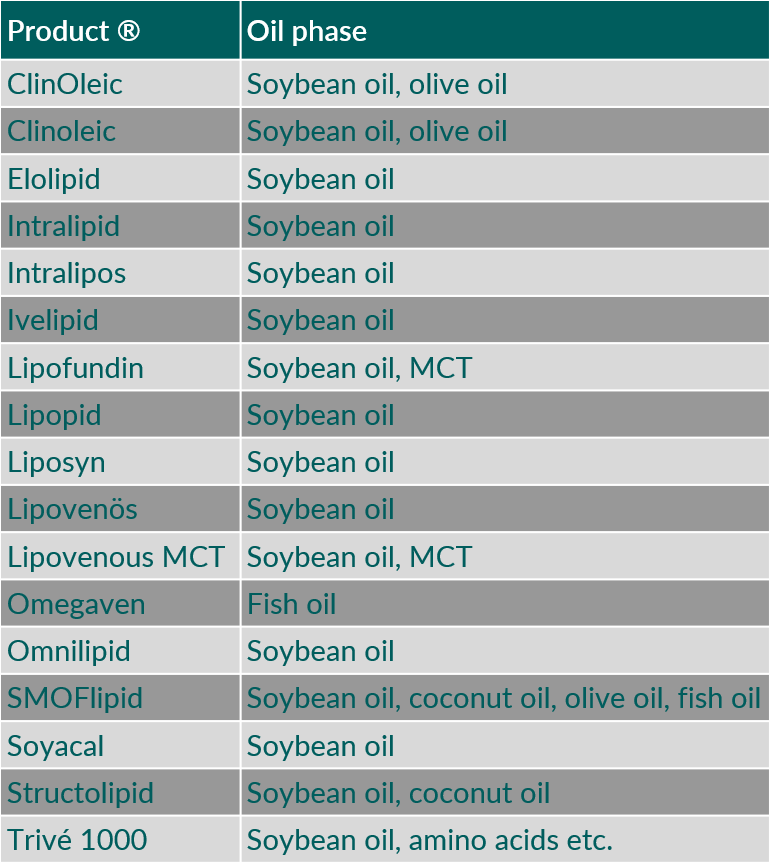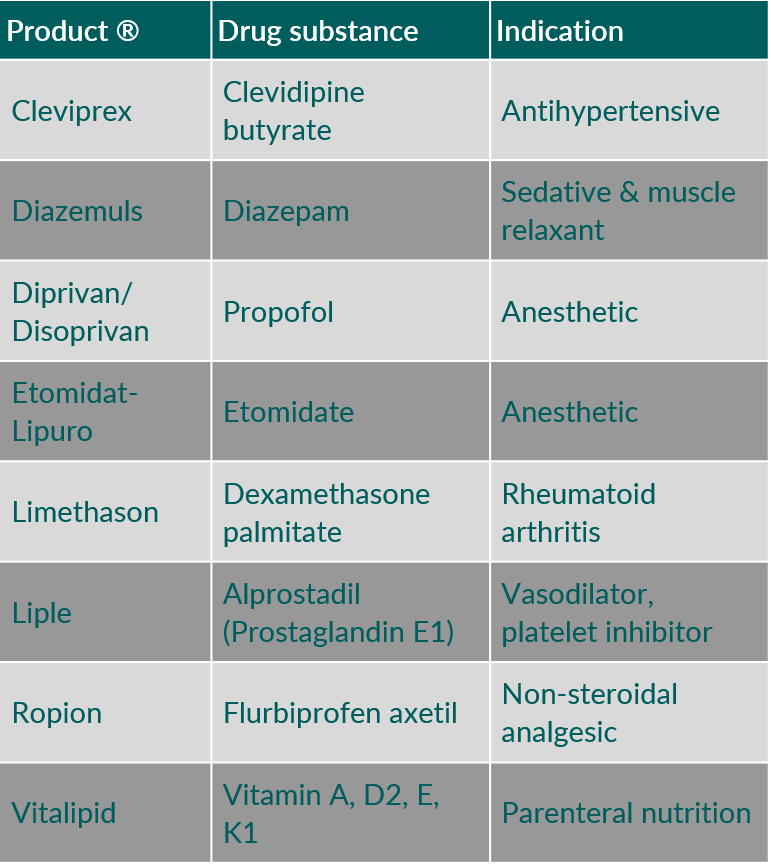Emulsions

In oil-in-water (o/w) emulsions, an oil phase is finely dispersed in an aqueous phase. However, since this fine distribution is thermodynamically unstable, an amphiphilic emulsifier is required to separate and stabilize the two phases.
Phospholipids are ideally suited for this purpose. In particular for parenteral use and large administration volumes, the excellent safety profile of phospholipids provides an innate advantage in comparison to synthetic surfactants.
Read more about the application of phospholipids as emulsifiers here.
Pharmaceutical applications of emulsions
Commercially available parenteral phospholipid-based emulsions
Emulsions based on egg phospholipids as emulsifier are widely used for parenteral nutrition. The oil concentration in such formulations ranges from 10 to 30 %, whereas the emulsifier/phospholipid concentration is 0.8 – 1.2 % w/v. The maximal cumulative daily dose of 3 g triglycerides/kg body weight/day equals 0.36 g phospholipid/kg body weight/day, demonstrating the excellent tolerability of this excipient.1)
Typically, the emulsion is prepared by dispersing the phospholipids, optionally with a minor amount of sodium oleate or oleic acid in the aqueous phase and mixing the aqueous phase with the oil phase to make a crude oil in water emulsion. To reach a suitable particle size, the emulsion is passed several times through a high pressure homogenizer.
The lipid particles have then about the same size as the natural lipid carrying particles in the blood, the chylomicrons. After filtration through a 5 or 10 μm pore size filter, the emulsion is sterilized in a rotating autoclave that assures homogenous heat distribution in the container and filled under nitrogen in glass vials or infusion bags.2)3) The quality control of such formulations is described in the United States Pharmacopeia.
Nowadays, such emulsions can contain several types of oil like soybean oil, olive oil, medium chain triglycerides, and fish oil. The composition is optimized to provide the patient, besides the necessary calories, essential vitamins, amino acids and fatty acids. Table 1 provides examples of formulations for parenteral nutrition.
In addition, emulsions can serve as intravenous carrier for drugs which are poorly water soluble and possess a high solubility in the oil. A prominent example is Propofol, a well-known narcotic for operations. Further examples are provided in Table 2.

Table 1. Intravenous oil-in-water emulsions using egg phospholipids as emulsifier. (Abbreviation: MCT, medium chain triglycerides)

Table 2. Intravenous drug products containing oil-in-water emulsions using egg phospholipids as emulsifier.
You want to know more about phospholipid-based formulations?
Please use the following links:
How do phospholipids influence the characteristics of liposomes?
How are mixed micelles formed and applied?
What role do phospholipids play in lipid nanoparticles (LNPs)?
The use of natural and synthetic phospholipids as pharmaceutical excipients
Eur. J. Lipid Sci. Technol. 116, 1088-1107
| PubMed |

